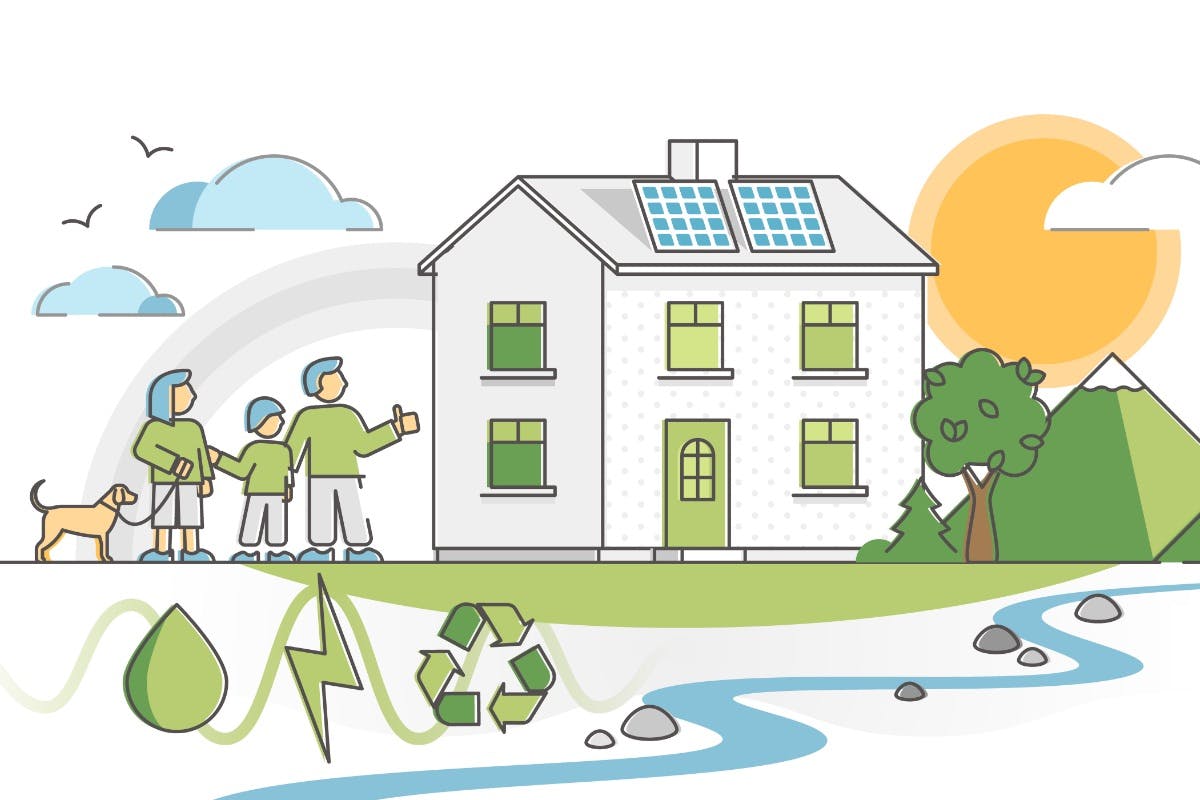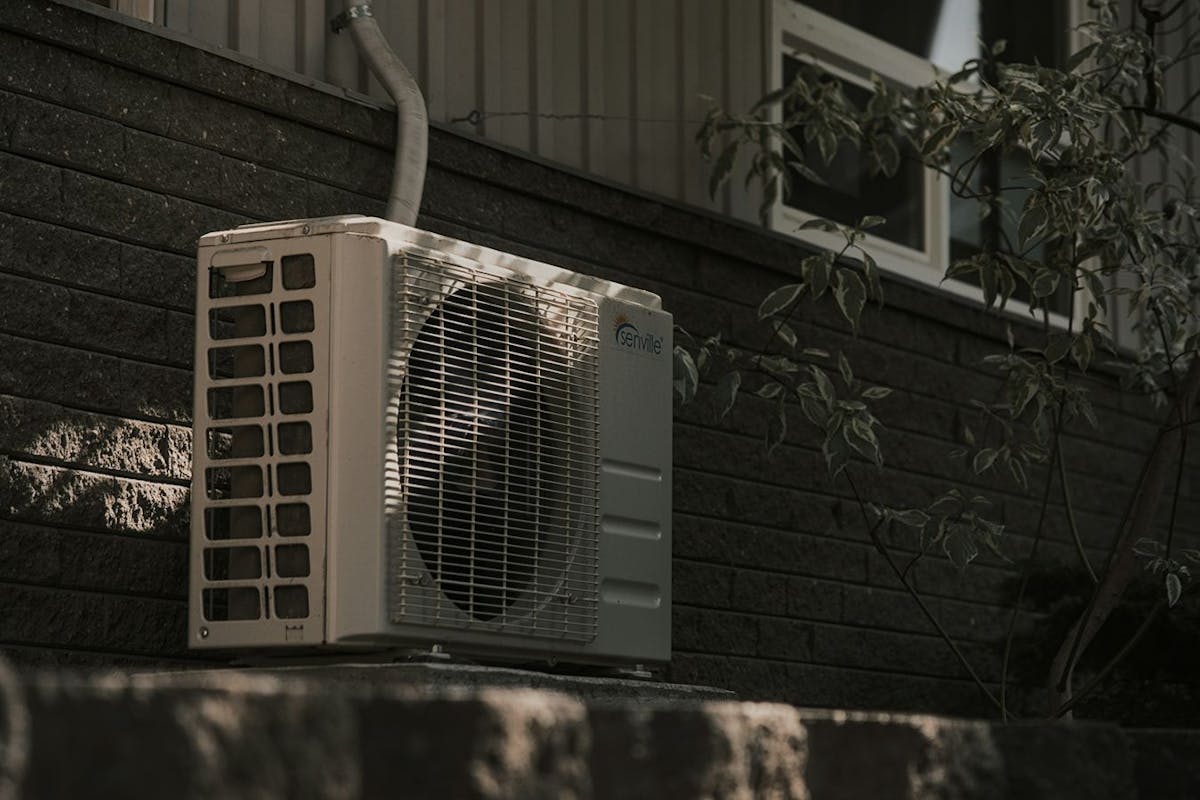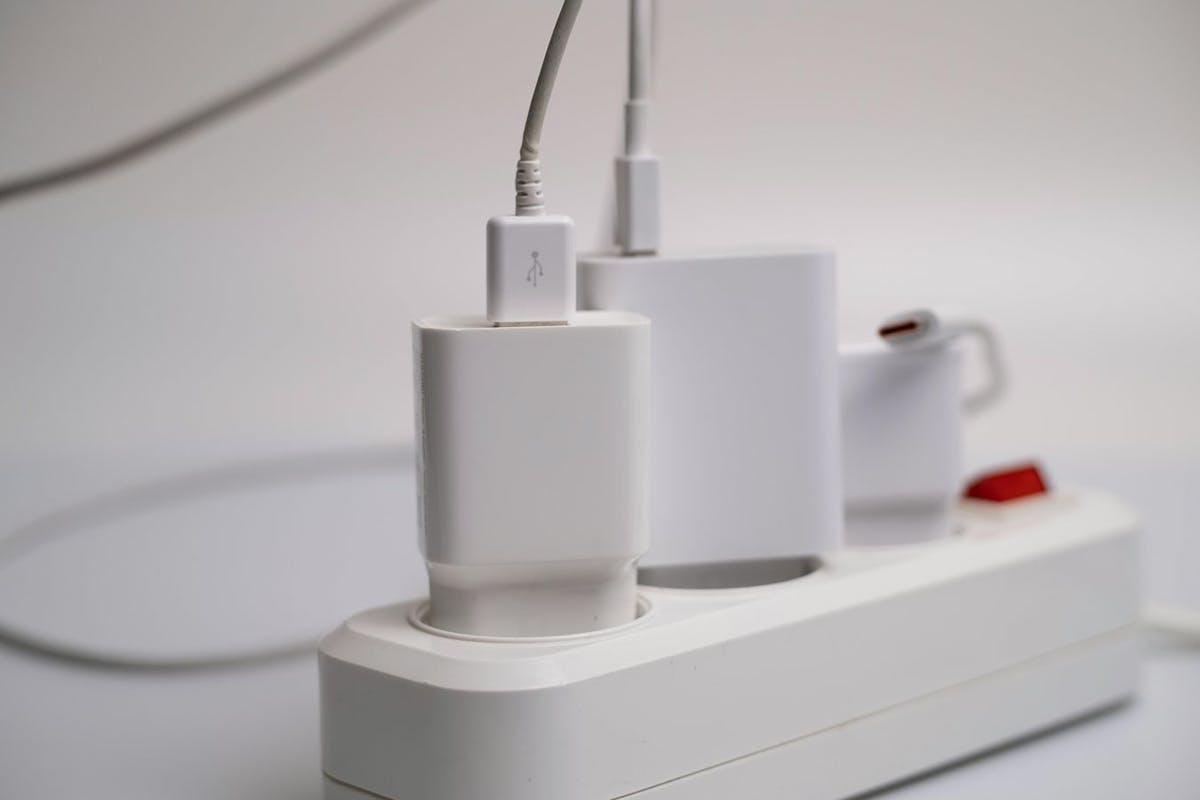10 Tips On How To Go Green At Home
Last edited

Author
Cory O'Brien
Senior Director - Growth Marketing

Editor
Ryan Barnett
SVP, Policy & New Market Development

The amounts of fuel burned, trees cut, landfills stuffed, and pollution produced increase each year. Every decision you make can have an impact on the environment, from the materials you use to how you shop, travel, eat, and live. People want tips on how to go green at home and be more environmentally friendly, but they often don't know how to start.
If we want to protect the planet, we need to change how we live. Luckily, it’s easier and more convenient than ever to lower your carbon footprint, and you can often save money in the process. Our list of ten easy tips to go green at home will allow you to make a big difference in the environment - especially if everyone around the world does their part.
See how much you can save with home energy changes
What Does Going Green Mean?
Though everyone has their own “going green” definition, to us, going green simply means living in ways that are intentionally more eco-friendly. Even small changes can have a big impact, like shopping local, driving less, recycling, and planting local flora in your garden that promotes the local ecosystem. You don’t have to forego technology and go off the grid to reduce your impact on the environment. In fact, current trends in home technology can make going green easier than ever before.
What does it mean to go green? Your thermostat can monitor the weather and your habits to keep you comfy without wasting electricity. Your smartphone can connect you with your local recycling center or maybe a neighbor who can take that old chair off your hands so it doesn’t enter a landfill. You can go green and still live in the modern world.
Our 10 Favorite Tips to Go Green at Home: Simple to Involved
If you want to go green, start small! There are lots of ways to get started with green living without making any major life changes. We’ve arranged our favorite eco-friendly suggestions and easy tips to go green, from the simplest methods to more involved home projects.
Instead of trying to do everything at once, we recommend that you start with one tip and move to the next one when you’re ready. Any help matters when it comes to improving the environment.
Tip #1: Install a Power Strip in Your Home Office
With more people being able to work from home, these new home offices can sometimes come with an unexpected increase in electricity consumption. Even when you aren’t using your computers, printers, and other electronic devices, they are often still drawing power and running up your electricity bill. This concept is called “standby power” or “vampire energy” and it refers to electronics that suck energy even when they aren’t in use.
One of the easiest ways to go green when working from home is to eliminate this wasted energy by plugging your devices into a power strip that allows you to turn everything off with only one switch. When you’re done working for the day, just flip that switch and conserve energy.
For even more control, you can also invest in a smart power strip that allows you to turn off individual plugs directly from a smartphone app.
Tip #2: Wash Your Car at the Car Wash
Washing your car in the driveway can be fun (and give you a sense of satisfaction at a job well done), but it’s not very environmentally friendly. Believe it or not, it can be much greener to wash your car at a well-maintained car wash location.
These facilities catch, treat, and re-use soapy runoff internally to lower costs and conserve water. This reduces both the water used per wash and the amount of groundwater exposed to cleaning chemicals.
Tip #3: Keep a Mini-Garden on Your Desk
One of the easiest and most comforting ways to go green is to add plants to your workspace. Your office will feel brighter and more oxygen-rich with house plants filling the space. Indoor plants consume carbon dioxide and release oxygen, improving your home’s air quality without requiring an electric-powered filter.
If you're a natural gardener, you can keep an entire indoor greenhouse opposite your desk to make you smile when stress levels rise. If you don't have a green thumb, self-growing mini-kits are a handy way to enjoy a plant that can thrive on its own and add a bright spot to the corner of your desk.
Tip #4: Install Aerating Faucets and Showerheads
Adding aerators to your faucets and showerheads is one of the easiest ways to go green and reduce the amount of water you use. Aerators are made of screen layers that slow the flow of water, providing more coverage with lower water usage.
Aerators are a quick, low-cost, and eco-friendly update that will help you use less tap water to complete household tasks. It helps conserve available freshwater by giving the earth more time to filter rain into the reservoirs and lakes, and it helps reduce local water pollution.
See how much you can save with home energy changes
Tip #5: Schedule a Donation Pickup
Recycling and donating household items can be easy ways to reduce your contribution to local landfills, but don’t start packing your car! Each trip to a recycling or donation center adds greenhouse gasses to the atmosphere. Instead, you can reduce the carbon footprint of travel by signing up for a pickup along with others on a route.
Whether you have a few boxes of old clothes to donate, a few totes filled with crushed cans, or light fixtures from a recent home renovation, there is likely a local organization that can schedule a pickup to take it off your hands. Many organizations will even arrange a contact-free curbside pickup for anything you want to recycle or donate.
Tip #6: Light Your Home with Sunshine
Using direct sunbeams to light your home is a time-tested method of lowering your electricity use. Not only is natural light soothing and free, but if used correctly, it can also help with temperature control.
To make the best use of your windows, try placing mirrors and pale, reflective surfaces in strategic locations throughout your home. This can bounce light into corners and interior spaces where direct sunlight might not reach. The more light you reflect, the brighter it will make your home.
Tip #7: Garden With and For Local Wildlife
If you have an outdoor garden or flower box, you can make a positive impact on the local wildlife by incorporating native plants. Plants that thrive in your region will enrich the natural soil in your garden without artificial and potentially harmful fertilizers or needing extra water. If you like seasonal blooms, you can plant flowering bushes that feed local pollinators like bees and hummingbirds which strengthens the local ecosystem.
A home garden is also the perfect way to reduce your kitchen waste. Start by composting your vegetable cuttings into rich soil. You can also feed your plants with the nutrient-rich water used to boil pasta and vegetables. (Just make sure to allow the water to cool before adding it to your garden!)
Tip #8: Improve Your HVAC Efficiency
Improving the energy efficiency of your home’s heating, ventilation, and air conditioning (HVAC) system can play a significant role in your monthly electricity costs, and the efficiency of your home. For many homeowners, heating and cooling costs can account for up to half of your monthly energy consumption.
We recommend completing a series of small, yet essential tasks to make your HVAC more energy efficient and lower your energy bills and carbon footprint:
- Seal your windows with caulk or weatherstripping
- Replace the weatherstripping around exterior doors
- Clean out and service your HVAC unit(s)
- Change the air filters every 2-3 months
- Add the correct amount of insulation to your attic
- Replace broken and loose windows
- Hang curtains in the summer and drapes in the winter
Tip #9: Upgrade to a Smart Home
Smart home technology can be futuristic and eco-friendly. For example, you can schedule your smart lights to turn on and off as needed, and some options even come with sensors that turn off on their own when they don’t detect anyone at home.
Smart thermostats can adapt to the rhythms of your home to create the most efficient temperature, while smart appliances use less power and resources by switching on and off at precise times. In general, smart devices are often more energy-efficient because they adopt the latest techniques in appliance design.
For more ideas on how to go green at home with smart gadgets, check out our list of Smart Home Energy Saving Devices That Save You Money.
Tip #10: Install Solar Panels
You can offset your household's power use by generating electricity from a solar power system on your roof. Solar panels make it possible to turn the natural energy from the sun into electricity for your home without creating greenhouse gases.
By generating electricity for your home using solar, you can offset the amount of electricity you pull from the grid, which is typically powered by fossil fuels. As a result, one of the biggest benefits of going green by going solar is that you can save money while you do good for the planet!
Going Green At Home Doesn’t Have To Be Hard
If you’re looking for how to go green at home, it’s easier than most people think, especially when you focus on adopting just a few green habits or household changes at a time. These small but important changes can make the positive impact that the planet needs.
It’s true that one person can't change the planet, but if we all work together, we can all contribute in our own small, yet constant way to defeat climate change and stop global warming.
Interested in going green by installing solar panels on your home? Find out how much you can save with Palmetto’s free Estimate Your Savings tool.


